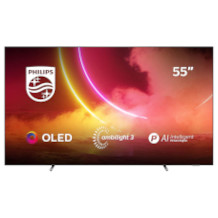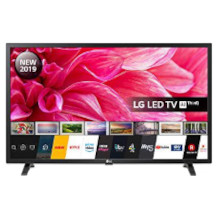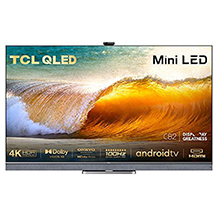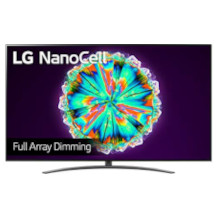75-inch TV purchasing advice: how to choose the right product
- The most important facts in brief
- 75-inch TVs are ideal for rooms of 20 square metres or more.
- For a high-quality picture, these models should have UHD, i.e. a resolution of around 3,840 x 2,160 pixels.
- The TVs are available with different screen technologies: LED, OLED, QLED and plasma.
- There should be enough HDMI connections for external storage media, consoles and media players.
75 inches for more picture
With a 75-inch TV, even a movie night at home can become a cinema experience. No matter what genre you prefer, with a TV in such a size every film becomes a unique experience. 75-inch TVs are among the largest of their kind, with a diagonal of 189 to 195 centimetres. Only a few manufacturers produce larger models; in most cases, 75 inches is the ultimate in home TV experience. Pure film and series viewing pleasure is guaranteed. Now all you need is the right model and popcorn.
The right screen diagonal for the home cinema experience
The size of a television is measured by its screen diagonal. For 75-inch TVs, this is a diagonal of almost two metres. This raises the question of whether such a large TV fits in every room. A few years ago, when tube TVs dominated living rooms, a certain distance had to be kept from the TV so that the picture quality did not suffer due to too short a sitting distance.
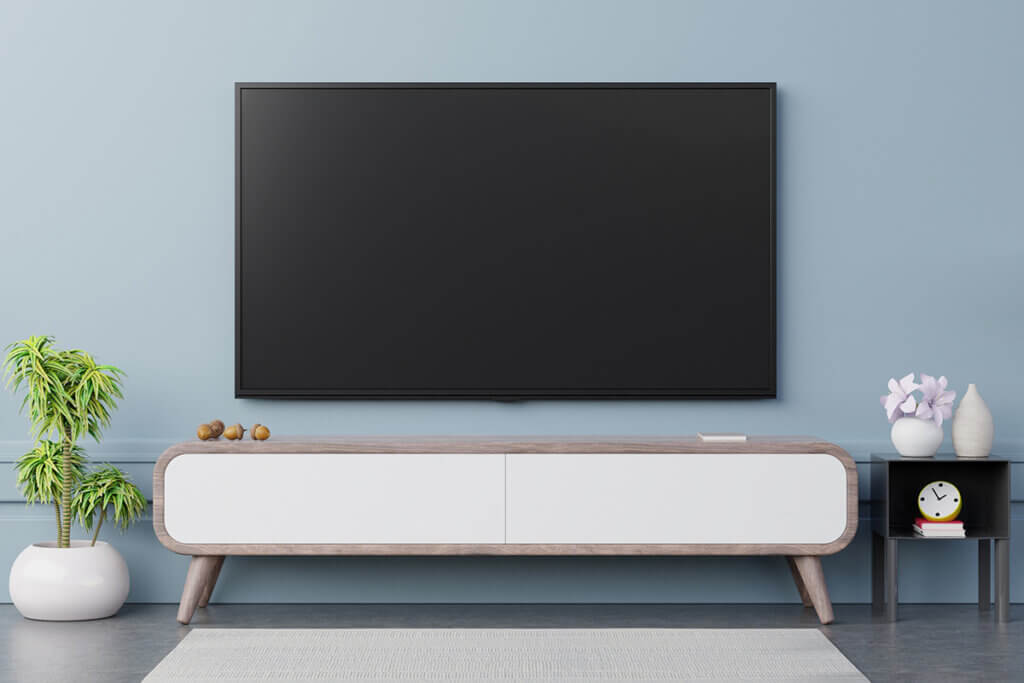
If you sat too close to the set, you witnessed blurred, noisy picture flickering – not a good condition for a movie night. Thanks to modern technology, the distance between large TVs is hardly an issue nowadays. 75-inch TVs can also be used in smaller rooms of about 20 square metres and offer a razor-sharp picture from any sitting position.
The different models
Like every other TV model class, 75-inch TVs are available with different picture formats: LCD and LED sets, plasma TVs as well as OLED and QLED models. OLED and QLED TVs are among the most common technologies among 75-inch TVs today. However, every manufacturer also offers LED or LCD TVs. These are usually LCD sets with LED backlighting.
What is an OLED TV?
The term OLED TV is derived from its technology. The “Organic Light Emitting Diode”, OLED for short, is an organic light-emitting diode and at the same time the central difference to the conventional LED TV with inorganic diodes. While light-emitting diodes, or LEDs for short, are point-shaped light sources, OLEDs are thin-film components that emit multicoloured light over a larger area. Since OLED displays do not require any additional backlighting, they can be built much slimmer in comparison. Today, they are not only found in televisions, but also in smartphones, cameras and tablets.
How does an OLED display work?
OLEDs consist of several layers of organic semiconductors. These are located between two electrodes, at least one of which is transparent. When direct current flows through the individual layers, they begin to glow, creating an image.
Pros and cons of OLED TVs
The advantages of OLED technology are particularly evident in comparison with an LED or LCD TV. The pixels of the latter are permanently illuminated due to the active backlighting. The different colours are created by different refractions of light, which are generated by the connected electrical voltage. OLEDs do not need this backlighting. The diodes light up themselves and can switch off individually. They are also thinner and thus support the strikingly slim design of OLED TVs. The advantages of the technology are also evident in the colour spectrum of the display. OLED models produce very rich blacks because the pixels can switch off individually. But OLED technology also impresses with strong, rich contrasts in all other colour spectrums.
Another decisive advantage of a 75-inch TV with OLED technology is its energy efficiency. It consumes significantly less electricity than other models. This is due on the one hand to the light sources used, and on the other hand to the fact that the backlighting is not needed. OLED TVs also stand out because of their slim design. They are comparatively light and have a very evenly illuminated picture.
However, the components of an OLED TV are somewhat more susceptible to external influences and have a shorter lifespan. In addition, there is a risk that still images burn in on the screen if a lot of light shines on the set from outside at the same time. To avoid this, almost all devices start a screen saver after some time. If you are watching a film or a series and the picture is constantly moving, there is also no risk of burn-in. OLED displays have only a low brightness; this is especially noticeable during the day. If it is too bright in the room, the picture quality of the TV also suffers.
Plus Points
- Slim design
- Very energy efficient
- Low net weight
- Rich colours and high contrast
Drawbacks
- Short lifespan
- Burn-in of still images possible
- Low brightness values
What is a QLED TV?
The backlighting of a QLED TV is implemented differently. The so-called “Quantum Dot Displays” consist of a foil with semiconductor nanocrystals and blue LEDs behind it. When switched on, the blue LEDs make the millions of crystals on the foil glow. The final colour depends on the size of the crystals. For example, if the blue light hits a crystal that is about ten nanometres in size, it emits red light. If, on the other hand, it is only two nanometres in size, green light is produced. In sum, this results in the three primary colours red, green and yellow, of which every picture is composed.
Advantages and disadvantages of QLED televisions
Thanks to the improved technology, the picture of a QLED TV is much more brilliant than that of a normal LCD set, for example. 75-inch QLED TVs offer high contrast levels, which are achieved due to the lack of backlighting. Many QLED TVs are already HDR-capable; the “High Dynamic Range” technology expresses colours and contrasts more powerfully. 4K resolution is also possible on 75-inch sets. This makes them state-of-the-art in the home cinema segment.
Compared to an OLED TV, QLED models are less powerful. The contrast values of QLED sets are lower, but the colour brilliance is similarly high. Energy efficiency is also good: a QLED display consumes about 30 to 50 percent less power than a conventional LCD TV. Moreover, a QLED TV is an improvement on an LED or LCD TV. It has very good colour brilliance and brightness. Its large colour volume makes it ideal for reproducing HDR content. At the same time, the risk of burn-in has been virtually eliminated here.
The quality of the picture is also achieved through so-called backlight or local dimming. Some manufacturers offer the option for individual models to dim parts of the screen or the entire screen surface: Black levels appear deeper and colour transitions smoother. However, the technology cannot be installed in a space-saving way, which is why these QLED models are usually not quite as thin. In addition, you should always sit in a straight line in front of the display. If the viewing angle deviates, the picture quality of a QLED device can decrease. However, some manufacturers such as Samsung have already improved this and offer models without loss of lateral viewing angles.
Plus Points
- Good colour brilliance
- Low power consumption
- No image burn-in
- High brightness values
Drawbacks
- Weak contrast values
- Less space-saving design
- Optimal picture only with straight viewing angle
4K resolution as the standard of 75-inch TVs?
Today, a lot of content is still broadcast in SD resolution, i.e. standard definition resolution. This means they have a resolution of 720 x 480 pixels. A 4K display has a resolution of around 4,000 pixels, depending on the aspect ratio of the screen. With an aspect ratio of 19:10, the format corresponds to 4,096 x 2,160 pixels. Basically, the designation 4K does not provide any information about the aspect ratios, the bit depths, the refresh rate and the colour and brightness values of the images. However, it is precisely this pixel value that is usually considered the standard when talking about 4K televisions. TVs with Full HD or UHD can already produce very good images. However, a 4K display offers an even sharper image in comparison, which is why many manufacturers rely on 4,000 pixels for their 75-inch flagships.
Naming
The name 4K comes from the 4,096 pixels of the resolution format. The “K” is a reference to the abbreviation “k”, which is an internationally standardised prefix for the unit kilo. One kilo is equivalent to a factor of 1,000. Consequently, 4K describes a value in the range around 4,000.
Is there a difference between 4K and UHD?
4K and UHD describe resolution formats that are between eight and nine megapixels. 4K televisions usually have an aspect ratio of 19:10, while UHD models have an aspect ratio of 16:9. 4K corresponds to 4,096 x 2,160 pixels, i.e. 8.85 megapixels, and UHD to 3,840 x 2,160 pixels, i.e. 8.29 megapixels.
Technology of the future
Most TV content today is provided either as HD content or even still as SD content. A 4K resolution, on the other hand, is a rarity and can be found at best with streaming providers. Nevertheless, the 4K standard is already present in many flatscreen models. Some models are even offered with 8K resolution. The trend is towards high-resolution, sharper images, even if the corresponding content is not yet provided.
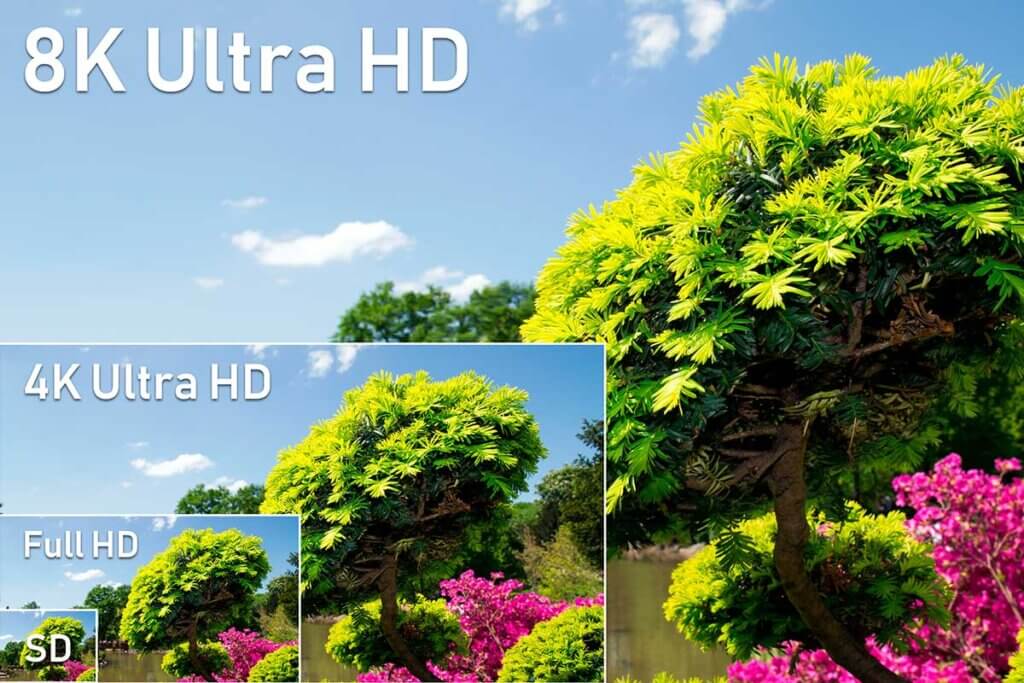
In addition to the ever-improving resolution, the technology is also subject to constant improvement. While OLED and QLED TVs are currently the leading technologies in the field of TV sets, manufacturers are already working on the so-called MicroLED technology. It is intended to surpass the standards of the other two technologies once again and become the new highlight in the home cinema sector. MicroLEDs offer greater brightness and brighter contrast values. In addition, there are no burn-in effects and the longevity is higher than that of OLEDs. MicroLED technology is currently still rather unknown. In 2019, Samsung presented two TV models based on MicroLEDs at the Consumer Electronics Show in Las Vegas. One of the models was a 75-inch TV; this makes it clear that the technology is also to be expected in the consumer sector. Just one year later, Samsung presented six more models, both for the consumer and the commercial sector.
What is MicroLED?
MicroLEDs are similar to an OLED screen. They do not need a backlight, but light up independently. One pixel is composed of three different, very small LEDs. This means that each pixel of the screen can be switched on and off. This allows MicroLED TVs to produce very natural black levels, as the pixels in question are simply switched off. Contrasts among neighbouring pixels are also much more accurate due to the use of the small LEDs. As a result, a MicroLED display offers particularly high-quality colour and contrast reproduction.
Advantages of MicroLED technology
As in OLED technology, individual pixels in MicroLED displays can be switched on or off. Compared to OLED displays, however, MicroLEDs have a much better brightness. In addition, there is no film or similar between the LEDs and the viewer. On the one hand, this has an impact on the image display, and on the other hand, it results in significantly lower energy consumption. Displays with MicroLED technology can also be built extremely slim and have a very long service life. However, these advantages come at a price: acquisition costs of several thousand euros are hardly affordable at the moment.
Curved or flat?
Just like most larger TVs, 75-inch models are available with either a curved screen or a flat screen. Both curved TVs and flat screens have their advantages and disadvantages. Due to the special design of a curved TV, it cannot be placed everywhere. In addition, mounting it on the wall is unfavourable because of the high angle. An oblique viewing angle from the side or from below can distort the picture of the curved TV and render the colours and contrasts unclear. You do not have this problem with a flat screen. However, some models with a curved screen offer a sharper picture once you have found and maintained the optimal viewing angle.
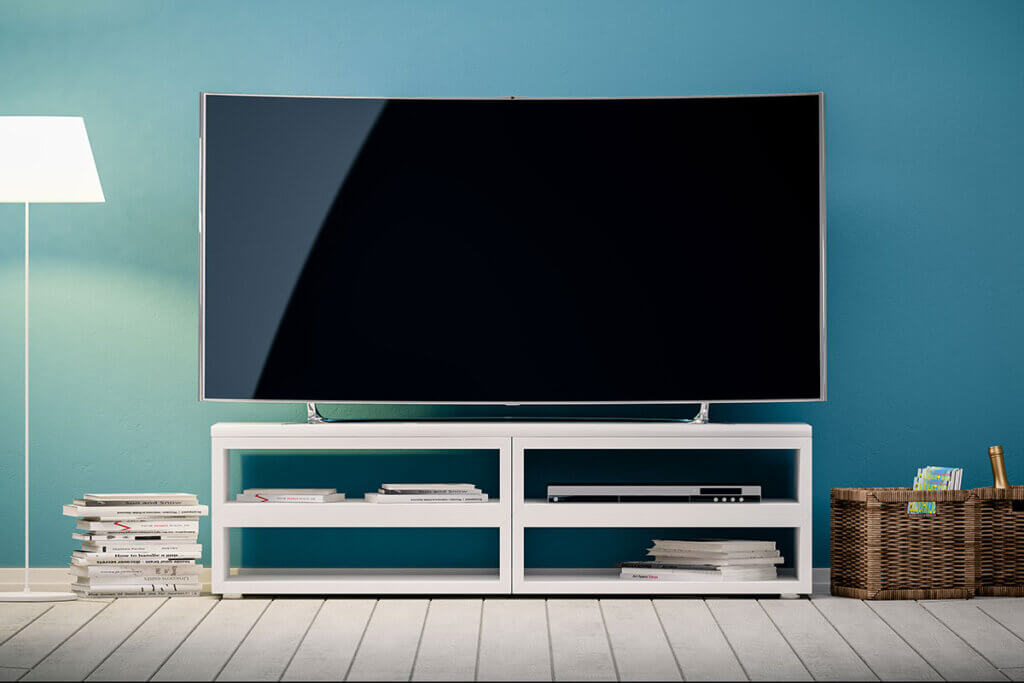
Other important purchase criteria
Other important purchase criteria include screen technology, picture resolution and refresh rate. In addition, the type of TV reception, the connections and the “Smart TV” option play a role. Last but not least, energy consumption and sound quality are decisive for a high-quality product.
Screen technology
The choice of 75-inch TVs today is largely limited to OLED or QLED models. When deciding, it helps to consider the conditions in the room. If the room is particularly bright and the TV is used a lot during the day, a QLED set is advantageous because it achieves higher brightness levels. An OLED TV, on the other hand, is more energy-efficient and has very deep black levels.
Picture resolution
The resolution of a 75-inch TV should be sufficiently high to do justice to today’s content. All sets have at least Full HD. However, large 75-inch models are usually available with UHD or 4K resolution. In the long term, the 4K version is certainly a good decision, as more and more content can be displayed in this resolution. But for a successful movie night, Full HD or UHD models are also sufficient.
Refresh rate
The refresh rate, also known as the frame rate, provides information about how fast the individual images are displayed on the screen. The frequency is expressed using the unit hertz. In addition, the term “frame per second” provides information about the refresh rate. A high hertz number is important for fast film scenes in order to obtain a smooth picture throughout. As a general rule, the larger the screen, the higher the refresh rate should be.
Television reception
Television content can be received in different ways. For this purpose, a triple tuner is usually recommended, which provides three different types of reception: DVB-S is used to receive television via satellite, DVB-T provides the television programme via antenna and DVB-C describes cable television, which runs via a contract with a cable network operator. Last but not least, there is IPTV; here, television runs via an Internet line and a special receiver. An HD triple tuner also offers reception of high-definition television.
There are also twin tuners and dual tuners. Twin tuners, for example, allow you to watch one programme via DVB-C and record another one via DVB-C. In this case, you have to decide in advance which type of reception you want. With a dual tuner, on the other hand, you can watch a film via DVB-C and record a series via DVB-T, because the tuner receives two different signals.
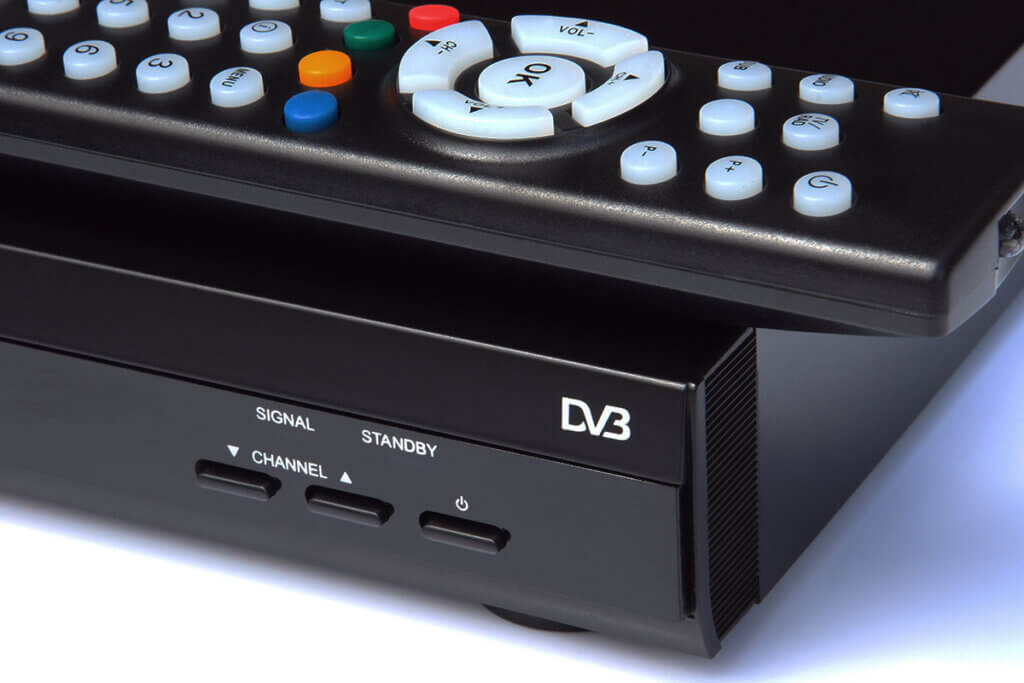
Connections
The HDMI connections are particularly important. These are used to connect other devices such as receivers, Blu-Ray players and consoles. The more HDMI connections the TV has, the more options you have for using your devices. USB slots and a network connection are also useful. You can connect your 75-inch TV to the Internet via the network connection; this is especially important for smart TVs, as their full range of functions can only be used with an Internet connection. Optionally, you can also connect the TV to the Internet via WLAN. However, reception must be very good and data transmission must be sufficiently strong.
Energy consumption
Especially with larger TV models, it is advisable to look at the stated energy efficiency class before buying. This is indicated by means of a letter from A to G. A represents the best value. Particularly energy-efficient appliances have one, two or three plus signs next to them, which means that class A+, A++ and A+++ appliances are particularly recommendable. Provided you do not use your set for several hours a day, a television with a lower class may also be useful. Compared with energy efficiency class A, however, a 75-inch TV in class A++ uses only about two-thirds of the electricity.
Sound quality
Since the internal sound of modern TV sets does not match the quality of external systems, many models have suitable connections. As a rule, you can connect sound boxes, a sound bar or a sound system to the TV set via an optical audio cable or a simple audio cable. With some devices, you can also connect the system via the HDMI ARC connection. ARC means “Audio Return Channel”. The TV set can send and receive audio signals. So you can watch the Blu-Ray film on the 75-inch TV and listen to the sound from the system. In addition, you have one less cable lying around, as the usual audio cable is no longer needed.
Hints and tips for home cinema set-up
Before you sit back on the couch and relax to enjoy the latest blockbuster, here are a few tips for setting up your home cinema.
75-inch TV or beamer?
No matter what you want to watch at home, be it films, concerts or sporting events, a high-quality screen is an absolute must. Today, good televisions come in almost all sizes. The biggest picture, however, is provided by a screen onto which the film is projected via a beamer. Beamers are now even available in the form of HD devices that provide high-resolution images and can be connected to a sound system. Although a beamer often offers a larger picture in comparison, the room must be very well darkened for this. Incident light from outside or small light sources in the room can already have a negative effect on the picture. A television is much less sensitive. In addition, beamers are less flexible because the screen is usually permanently mounted and there must always be an appropriate distance between the device and the screen.
What should you consider when setting up the home cinema?
The premises form the basis and provide important requirements for the screen as well as the sound system. The first important question is whether the room is large enough for a good home cinema. The distances must be right, both from the sofa to the screen and to the various speakers of the sound system – especially if you are using a surround sound system. The room conditions give you a good idea of how big the screen can or should be and how many speakers you can distribute in the room.

The optimal seating distance depends on the resolution of the screen. SD sets need a sufficient distance to provide a sharp picture. If you sit too close, the picture becomes blurred. Therefore, a seating distance of about 6.5 metres from the SD-resolution TV is recommended. With HD screens, the distance is reduced to 4.5 metres. However, the distance only becomes really “small” with a 4K TV. Here, the optimal distance to the screen is only 2.5 to 3.0 metres. This means that the home cinema can even be implemented in smaller rooms.
Which technical devices belong to the home cinema system?
The 75-inch TV is only one component of the home cinema. You also need an AV receiver and a sound system. The AV receiver switches the various audio and video sources to their respective outputs. This allows the TV to communicate with the sound system. At the same time, other external devices can be connected to the system with the AV receiver and used with full sound. In addition to the Blu-Ray player, these include, for example, a game console and other playback devices. The sound system itself consists of various speakers. These are often of different sizes and are distributed around the room. In this way, they provide an all-round sound similar to the sound experience in the cinema.
Further test reports
Please note: This is a comparison. We have not tested the 75-inch TVs ourselves.
Stiftung Warentest tested a total of 18 TVs as recently as October 2020. In the test, models of different sizes from 24 to 75 inches, i.e. screen diagonals from 61 centimetres to 165 centimetres, were tested. Among the manufacturers in the test were well-known brands such as Samsung, Sony and Philips, which offer models in various price categories. What is striking in the test is that TVs only deliver very good pictures from a purchase price of about 400 euros. According to the testers, models with a screen diagonal of 109 centimetres are particularly recommendable because the price-performance ratio is good here. Smaller televisions, on the other hand, were hardly convincing in the test.
In September 2020, the “Ratgeber Technik” of the trade magazine PC Games Hardware provided another test. In this test, too, screens of different sizes were compared. However, the range in the test is smaller; it only extends from 49- to 75-inch TVs. Another plus point: in the 75-inch TV test, the models were compared with each other depending on their technology. This means that an LCD TV was only compared with other LCD models in the test, while a new OLED TV had to compete with OLED flat screens from other manufacturers. The manufacturers in the comparison include Sony, Samsung, Panasonic and LG. The test winner among the OLED TVs was a 65-inch model from Philips. Among the LED and LCD screens, on the other hand, a Samsung device came out on top.

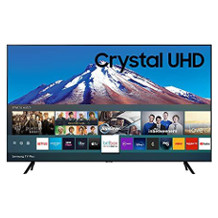
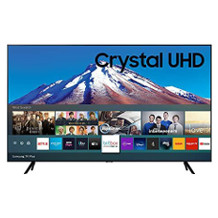
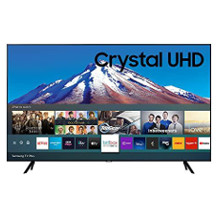
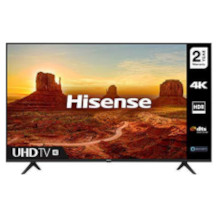
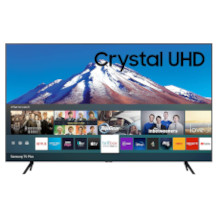
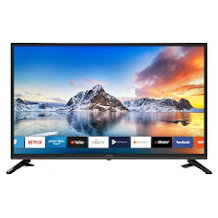
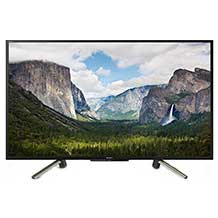

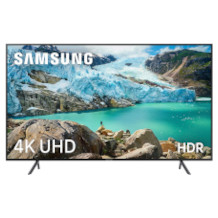

 700 reviews
700 reviews
